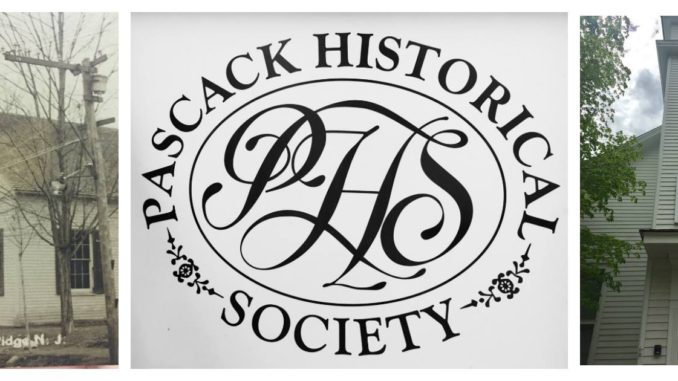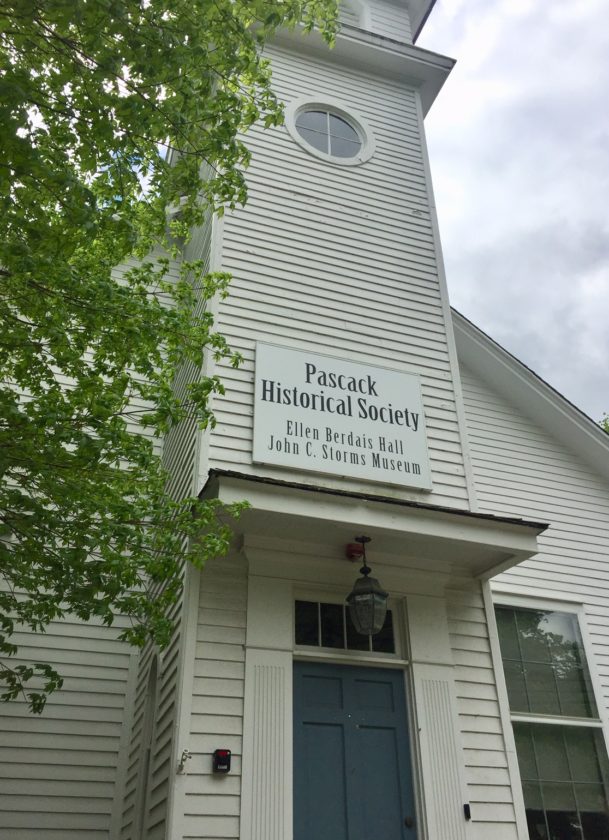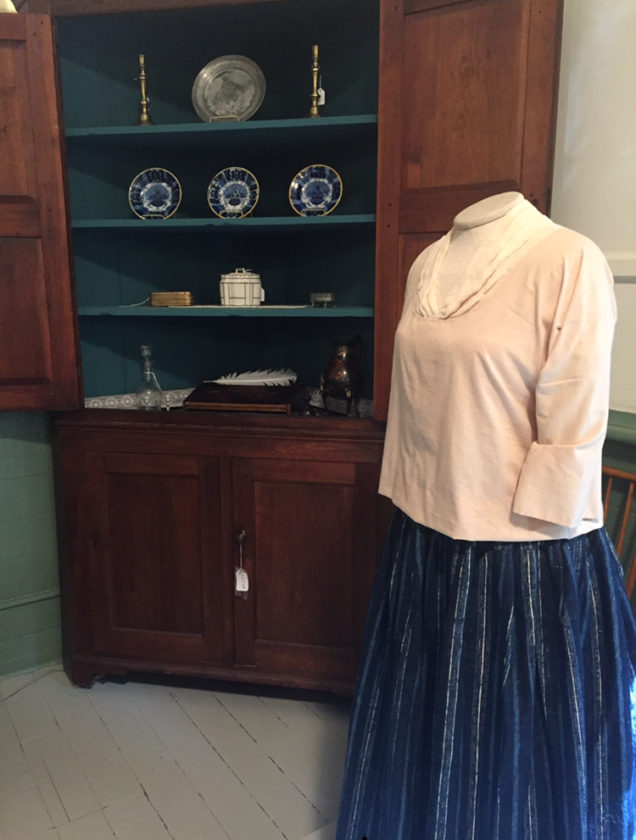
PARK RIDGE, N.J.—You’re just in time to help celebrate the Pascack Historical Society’s newly redesigned John C. Storms Museum, Saturday, Oct. 12 from 1 to 4 p.m.
A ribbon cutting ceremony is set for 2. Everyone is welcome, the event is free, and there’s plenty for kids to discover (including—speaking of ribbon—a collection of vintage and oh so clickity-clackity typewriters).
According to its board, the museum has been renovated to better tell the story of the Pascack Valley, now a rich and lively project of the people and institutions of Emerson, Hillsdale, Montvale, Park Ridge, River Vale, the Township of Washington, Westwood, and Woodcliff Lake, among others.
Beginning in Lenape Indian days 5,000 years passed—these were the Delaware people, indigenous to the Northeastern Woodlands—guests will find themselves in the colonial era, Victorian times, and the early 20th century through thousands of artifacts in redesigned exhibits.
The museum will resume its regular hours Oct. 13: It’s open to the public Sundays from 1 to 4 p.m. and Wednesdays from 10 a.m. to noon. Admission is free.
The grand reopening promises museum tours, new acquisitions, artifacts never before exhibited, a new section on the colonial era, history games, and a chance to pose your local history queries to the museum’s very own “Answer Girl.”
Cake and light refreshments will be served at the site’s Ellen Berdais Hall, which many know also as the main venue of the society’s lectures and curiosity sales.
The renovation, work of approximately two years, was designed by museum specialist Bari Falese, who offers her services to museums, historic societies, and private clients.
New lighting and signage will help make more clear guests’ journey through time.
Fine new display cases were designed and built by George E. Mulhauser of Westwood.
And the thousands of pieces in the museum’s archives are being indexed with cutting-edge museum software, so exhibits can be created around any topic.
One major exhibit, shown off to best effect in the renovation, is the world’s sole surviving wampum hairpipe drilling machine, an artifact sought by the Smithsonian Institution. The device was integral to the success of the Campbell family wampum production business, which was of cultural significance in the Pascack Valley.
Recently, four ledgers from that wampum business, never before seen by the public, were donated to the museum by Campbell descendants Linda Gifford Van Orden of Allendale (now residing in western Massachusetts) and Susan Accardi of Simsbury, Connecticut.
The sisters, raised in Hillsdale, inherited the ledgers from their uncle, Howard I. Durie (1919–1990), noted historian and genealogist and author of “The Kakiat Patent in Bergen County, New Jersey; with genealogical accounts of some of its early settlers” (1970).
And as a proof that history is as much about the present as it is the past, those ledgers are still at work, helping to inform research by Harvard University anthropology doctoral candidate Eric Johnson, who continues to turn up related artifacts in Park Ridge.
(See “History Unearthed? Harvard Researcher Excavates For Wampum Industry Relics,” Michael Olohan, July 22.)
Former chapel building continues to inspire

The Pascack Historical Society museum’s headquarters, at 19 Ridge Ave., a block north of Park Avenue West—a leafy residential area—was dedicated Dec. 8, 1873 by the Rev. Henry Ward Beecher and built through the efforts of James Leach, James Hall and Jacob, his son, for use as a Sunday school and mission chapel.
The marker out front explains that in 1875 the building became a Congregational Church and the site of the first local library.
The Pascack Historical Society, powered by more than 200 subscribers, acquired the building in 1952 for its headquarters and a museum founded by John C. Storms.
“Since that time the museum has remained an all-volunteer organization. We have never had a paid employee since our inception. We think that is a remarkable feat. Our most difficult task is annually raising the money needed to keep our doors open,” the organization says online.
To touch the past…

According to PHS President Jacqueline A. Martin, coming face to face with an exhibit or artifact at the museum—and to see it in its context—is to touch the past.
“This puts them in contact with people who lived full lives here… people who had little technology and few medicines. Local people whose lives were certainly different than ours, but they had hopes and dreams, faced adversity and hardship, and every single one of them called the Pascack Valley their home.”
Martin told Pascack Press on Oct. 1, “That face-to-face interaction—in person, up close—is vital to your PHS museum experience. No amount of photos in a book or Internet browsing will ever replace that sensory in-person experience.”
The museum’s lower level houses a huge textile and costume collection featuring a large vintage bridal gown collection, men’s, women’s, and children’s garments, hats, and accessories, a prestigious military garments and accessory collection, quilts, coverlets, and linens of all types, a vintage handbag collection, and Civil War mourning garments.
Artifacts from this collection can be viewed by appointment and for a small donation.
Offering deeper cuts, the society’s Katharine P. Randall Research Library is an irreplaceable repository of documents of all types: books, maps, videotapes, ephemera, photographs, and oral histories that chronicle the lives and times of people of the Pascack Valley, past to present.
Pascack Adventures fun for all

features new acquisitions.
Carrying on through the renovation’s closure, and looking forward to new offerings: the museum’s popular Pascack Adventures, a year-round on-site program for children in grades 2–6.
Now in its tenth year, the program is administered by a former teacher and school principal. Programs range from the making of clay pots to participating in a mock archaeological dig.
To plan museum visits or to learn about programs for your school, email info@pascackhistoricalsociety.org.
Pascack Historical Society is a 501(c)(3) organization, with donations tax-deductible.
Among their benefits, members receive an award-winning quarterly newsletter, “RELICS,” edited by PHS Vice-President Kristin Beuscher, who pens the popular Pascack Press and Northern Valley Press column “Back in Time.”
Additional officers in 2020–2021 are Second Vice President Thomas J. Norton, Secretary Barbara Bober, and Treasurer David M. Moskowitz.
Trustees 2020–2021 are Gioia Castiglione, Robert Mathez, Marilyn Miller M.D., Francesca M. Moskowitz, Katharine P. Randall, H. Carol Riccardo, William Smith, Joseph M. Treanor, and Helen Whalen.
Save this date as well: William Martin presents “A History of Home Construction in the Pascack Valley” on Sunday, Nov. 17 at 2 p.m.
Martin is an architect and building inspector, chair of Westwood’s Zoning Board, a member of Bergen County’s Historical Advisory Board, and chairman of the Pascack Historical Society’s Preservation Board.
For more information visit pascackhistoricalsociety.org or call (201) 573-0307.
Disclosure: The author married the former Amy Van Orden, whose family donated the Campbell wampum ledgers to Pascack Historical Society, at a ceremony at the John C. Storms Museum in November 2017 (beneath a portrait of Howard I. Durie). It was the first wedding at the site of the former Congregational Church in many decades.
